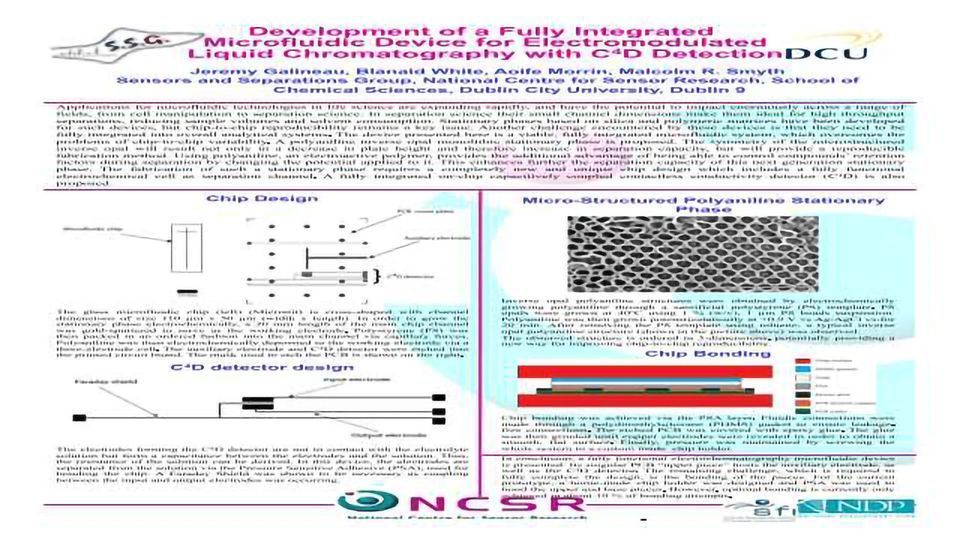Development of a Fully Integrated Microfluidic Device for Electromodulated Liquid Chromatography with C4D Detection

Applications for microfluidic technologies in life science are expanding rapidly, and have the potential to impact enormously across a range of
fields, from cell manipulation to separation science. In separation science their small channel dimensions make them ideal for high throughput
separations, reducing sample volumes and solvent consumption. Stationary phases based on silica and polymeric matrices have been developed
for such devices, but chip-to-chip reproducibility remains a key issue. Another challenge encountered by these devices is that they need to be
fully integrated into overall analytical systems. The device presented here is a viable, fully integrated microfluidic system, which overcomes the
problems of chip-to-chip variability. A polyaniline inverse opal monolithic stationary phase is proposed. The symmetry of the microstructured
inverse opal will result not only in a decrease in plate height and therefore increase in separation capacity, but will provide a reproducible
fabrication method. Using polyaniline, an electroactive polymer, provides the additional advantage of being able to control compounds’ retention
factors during separation by changing the potential applied to it. This enhances further the separation capacity of this next generation stationary
phase. The fabrication of such a stationary phase requires a completely new and unique chip design which includes a fully functional
electrochemical cell as separation channel. A fully integrated on-chip capacitively coupled contactless conductivity detector (C4D) is also
proposed.
fields, from cell manipulation to separation science. In separation science their small channel dimensions make them ideal for high throughput
separations, reducing sample volumes and solvent consumption. Stationary phases based on silica and polymeric matrices have been developed
for such devices, but chip-to-chip reproducibility remains a key issue. Another challenge encountered by these devices is that they need to be
fully integrated into overall analytical systems. The device presented here is a viable, fully integrated microfluidic system, which overcomes the
problems of chip-to-chip variability. A polyaniline inverse opal monolithic stationary phase is proposed. The symmetry of the microstructured
inverse opal will result not only in a decrease in plate height and therefore increase in separation capacity, but will provide a reproducible
fabrication method. Using polyaniline, an electroactive polymer, provides the additional advantage of being able to control compounds’ retention
factors during separation by changing the potential applied to it. This enhances further the separation capacity of this next generation stationary
phase. The fabrication of such a stationary phase requires a completely new and unique chip design which includes a fully functional
electrochemical cell as separation channel. A fully integrated on-chip capacitively coupled contactless conductivity detector (C4D) is also
proposed.






